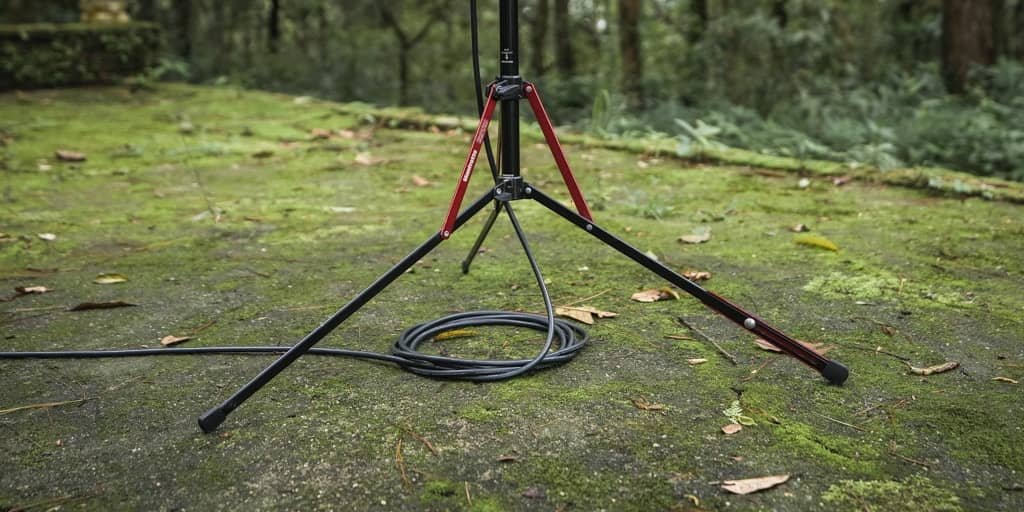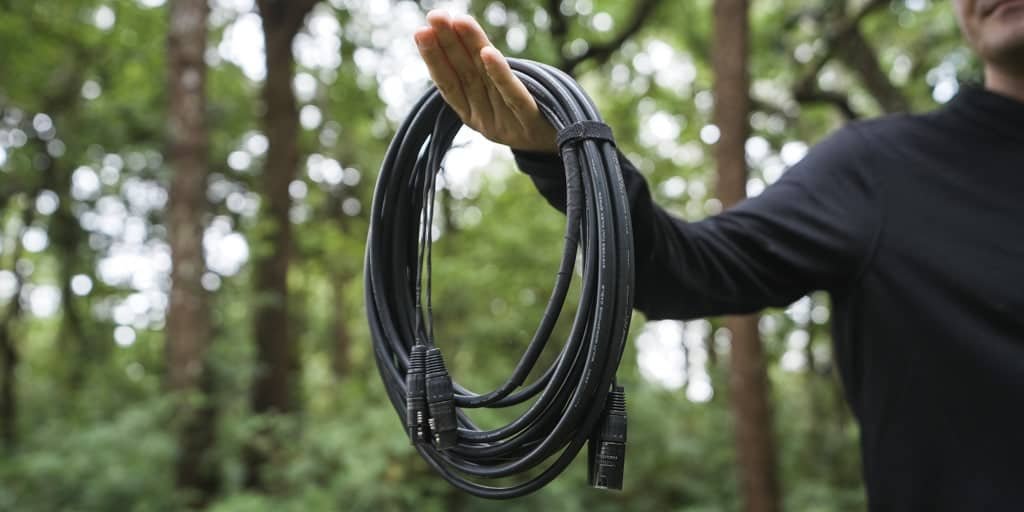Become Better at Field Recording
Learn the 6 hacks you need to know to become a better field recordist
How to become better at field recording
To excel in the field of audio recording, it's essential to keep refining your skills and knowledge. In this blog post and accompanying video, we delve into a plethora of hacks designed to take your field recording abilities to the next level.
You might encounter tips you're already familiar with, or stumble upon new strategies you've never considered before. But regardless of your current expertise level, we believe that actually seeing these techniques in action will provide you with valuable insights and potentially transform your approach to field recording.
Greg Simmons
Meet our friend Greg Simmons, a seasoned sound engineer, audio educator, and writer. With 40+ years of eclectic recording experience—from heavy metal to Tibetan monks, theatre to performance art—Greg's career is diverse and rich. He has dedicated 33 years to audio education, teaching at prestigious institutions like the Audio Education Centre and the Australian Institute of Music, infusing enthusiasm for well-reproduced sound in countless students.
Besides, Greg also contributes his profound knowledge to the audio industry through his writings in renowned magazines, including as the Founding Editor of AudioTechnology. Passionate about traveling, he spends his spare time recording the music of Asia and the Himalaya, conducting educational recording workshops, and more. We’re so grateful that he found time for making videos with us.
Hack #1 - The Sponge
Our first hack involves the use of something you might have lying around your house - sponges. But why sponges, you might ask? When recording sounds, particularly in outdoor environments, microphones often pick up unwanted vibrations from their surroundings. These can muddle your audio quality.
By placing three sponges between a hard surface and a tripod, we create a buffer that absorbs these disruptive vibrations, ensuring a cleaner, crisper audio capture. It's a simple and cost-effective way to enhance your field recording results.
Hack #2 - Tripod vs Nanopole
Hack number two unveils an unanticipated hero: the FotoPro Carbon AirCross Tripod.
This humble camera tripod with removable ball head. A camera tripod can be a stalwart tree in the face of a blustery storm, providing unwavering support on unpredictable terrains such as uneven grounds or rocky surfaces. This is due to its extendable legs, a feature that grants it flexibility and stability in varying circumstances.
The versatility of a good tripod doesn’t stop there. Once the ball head is removed, a hidden treasure – a 3/8-inch thread – comes into view. This versatile mounting point, found on a myriad of professional camera and audio gear, is a perfect fit for attachments like the Rycote Cyclone. Discovering this functionality is similar to finding a secret pocket in your favorite jacket – it’s efficient, practical, and always a delightful surprise.
This side-by-side comparison pits Manfrotto’s Nanopole against FotoPro’s Carbon AirCross Tripod, and it’s an eye-opener. Even though the Nanopole comes with its own set of benefits, the AirCross Tripod, with its sturdy construction and practical features, emerged victorious in this contest. So much so that after seeing Greg’s demonstration, I am now seriously considering incorporating this tripod into my own recording toolkit. It could prove to be a valuable addition for future recordings.
Hack #3 - Dressing the Mic
Stand
Imagine this: You’re out in the field, your equipment perfectly set up, recording the mesmerizing sounds of nature. Suddenly, your microphone stand leans and teeters. Something has passed by and got caught in your microphone cable, pulling the stand over and sending your precious microphones crashing to the ground! It’s a nightmare for any field recording enthusiast. But our fourth hack, a stroke of pure genius, has got your back.
This hack is all about securing your microphones from unexpected tumbles when using tall stands and longer cables. The secret? Attach the cable as close to the stand as possible, tuck the cable under one of the stand’s legs, and then create a loop or two on the ground under the stand. This clever arrangement acts like a safety line and an anchor, adding an extra level of stability and security to your setup and gaining you valuable time to catch your mics before they hit the ground.
But seeing is believing, right? We recommend watching Greg in action at minute 06:35 in our video. You'll witness how this simple, yet incredibly effective hack can save your precious microphones from taking an unwanted dive. Don't miss it!
Hack #4 - Electrical Tape
Our fourth hack dives into the world of adhesive solutions, a.k.a, our good old friend - electrical tape. You might wonder why we'd include something so mundane in our list, but trust us when we say this: this hack is a game-changer! Loose stereo cables can be quite the troublemakers on a field recording mission, causing unwanted vibrations, risking damage, or worse, being ripped apart. But how do we tame this wild beast?
Greg shows us his method at minute 07:40 in our video. Spoiler alert: it involves the strategic application of electrical tape to secure the cables. This nifty trick can save you a world of problems, helping you keep your cool while recording in the field. It's truly a case of 'seeing is believing', so do head over to the video for a visual guide to this hack!
Hack #5 - Storing Your Microphone
Moving onto Hack #5, this one is particularly important - protecting your microphone from humidity. High humidity environments can wreak havoc on your recording equipment, but the solution is surprisingly simple: silica gel bags.
These moisture-absorbing packets are essential for preserving the integrity of your microphones, whether you're actively using them in a humid climate or storing them for an extended period. They help by absorbing excess moisture, creating an optimal environment for your microphones.
The practice is simple yet effective - store your microphone in a bag with a silica gel packet. This will help maintain the condition of your equipment and extend its longevity. And the best part? You can often find silica gel packets included in the packaging of various products, or you can purchase them in bulk on Amazon.
Hack #6 - How to Roll your Audio Cable
The final hack in our series can save you countless headaches - the art of properly rolling your audio cable. It may sound simple, but a well-rolled cable can save you time, prevent cable damage, and make your setup and pack-up processes a breeze.
This hack is all about technique, and there’s no one better to demonstrate it than Greg. He shows us how to roll the cable, how to eliminate those pesky twists, how to ensure both ends are in the correct position, and, as an added bonus – the purpose of the green and red dots on his male and female XLR connectors.
As this hack is highly visual, we highly recommend jumping to minute 13:23 in our video to watch Greg in action. It's one of those skills that, once mastered, will make you wonder how you ever managed without it.
Conclusion
In conclusion, these six field recording hacks not only demonstrate how to enhance your audio capture skillset, but also encourage an attitude of innovation and creative problem-solving in the field. There's always something new to learn or a better way to do things, regardless of your experience level.
We hope that these tips and tricks, graciously shared by our knowledgeable friend Greg Simmons, will prove useful in your own recording adventures. Remember, it's not just about the equipment you have, but how you use it.
If you've found these tips helpful and want to further delve into the world of field recording, do explore our All-In-One Bundle Sound Library. This bundle, a labor of love, represents our ongoing journey in sound recording and design. It's a resource we hope will be of value to all audio enthusiasts out there.
Thank you for joining us on this journey, and as always, 'Come for the tips, stay for the fun.'







